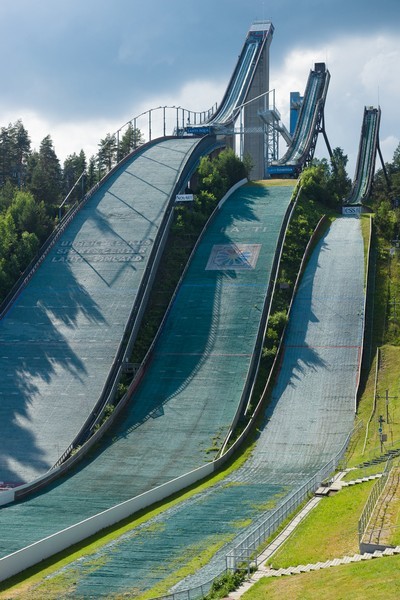3.6 The Salpausselkä ridges
 When the climate grew colder for small periods of time during the glacial melting stage, the ice sheet retreated at a slower rate and sometimes stopped moving completely. When this happened, loose materials accumulated near the edge of the ice sheet, forming steep ridges of terminal moraine. The Finnish Salpausselkä ridges are examples of such structures.
When the climate grew colder for small periods of time during the glacial melting stage, the ice sheet retreated at a slower rate and sometimes stopped moving completely. When this happened, loose materials accumulated near the edge of the ice sheet, forming steep ridges of terminal moraine. The Finnish Salpausselkä ridges are examples of such structures.
There are three Salpausselkä ridges, and they all comprise of till, gravel and sand, as well as various other unsorted materials carried by the glacial streams. Together, they are approximately 600 km long, and at times they are 60–80 meters higher than the surrounding environment.
The first and oldest Salpausselkä ridge was formed approximately 12 000 years ago and runs through Hanko, Lohja and Lappeenranta towards the northern side of Lake Ladoga. It stops the waters of the Finnish Lakeland from flowing into the Baltic Sea. The second Salpausselkä ridge is a little lower, located 20 kilometers to the north from the first one. It separates lakes Vesijärvi and Päijänne, and forms the southeastern shores of Pihlajavesi and Puruvesi. It was formed approximately 11 500 years ago.
The third and shortest Salpausselkä ridge was formed approximately 11 000 years ago. It stretches from Kemiönsaari to Hämeenlinna. The island of Jurmo in the Finnish Archipelago is also a continuation of this ridge.
The northern slopes of the Salpausselkä ridges are quite steep and consist of till and gravel that were mixed by the retreating glacial ice. The summits of the Salpausselkä ridges are relatively flat, wheras the southern slopes are gentle and consist of gravel and sand. The feet of the ridges consist of fine sand and clay. This soil type has been advantageous for the cultivation of crops, which is why agricultural activity has concentrated near the feet of the Salpausselkä ridges.